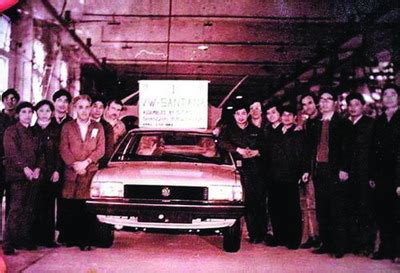Explore the fascinating history of Hupmobile, from its founding to iconic models, challenges, and lasting impact on the automotive industry.
Founding of Hupmobile
Contents
Hupmobile was an American automobile company founded in 1908 by Robert C. Hupp and his brother, Louis Gorham Hupp. The company was initially named the Hupp Motor Car Company and was based in Detroit, Michigan. Robert Hupp, who had previously worked for Oldsmobile and Ford, had a vision of producing affordable, reliable, and stylish cars for the middle-class market. With this goal in mind, the brothers set out to establish their own automobile company, thus marking the beginning of the Hupmobile legacy.
The Hupmobile was designed to cater to the growing demand for automobiles in the early 20th century. The founding of the company coincided with the rapid expansion of the automotive industry in the United States, as more and more people sought to own their own cars for personal transportation. This surge in demand provided the perfect opportunity for the Hupp brothers to enter the market with their innovative and affordable car designs.
In its early years, the company faced numerous challenges and obstacles as it worked to establish itself in the competitive automotive industry. However, the determination and vision of the Hupp brothers, combined with their expertise and experience in automobile engineering, enabled them to overcome these hurdles and lay the foundation for the Hupmobile brand.
The founding of Hupmobile represented a significant milestone in the history of the American automotive industry. The company’s commitment to producing high-quality, affordable cars helped to shape the landscape of automobile manufacturing and set new standards for innovation and excellence. Despite the challenges it faced, the Hupp Motor Car Company’s founding was a testament to the entrepreneurial spirit and pioneering vision of its founders, and its impact on the automotive industry continues to be felt to this day.
Early success and expansion
During the early 1900s, the Hupmobile Car Company experienced significant success and rapid expansion in the automotive market. Hupmobile quickly gained recognition for its high-quality vehicles, innovative design, and reliability, which appealed to a wide range of consumers. The company’s early success can be attributed to its commitment to producing well-built, affordable cars that met the needs of the growing middle-class population.
As the demand for automobiles increased, Hupmobile capitalized on this trend by expanding its production capacity and distribution network. It established a strong presence in key markets across the country, leveraging its reputation for superior craftsmanship and value for money. This strategic expansion allowed Hupmobile to strengthen its market position and further boost its sales and profits.
Moreover, the company’s early success and expansion were fueled by its continuous investment in innovation and technology. Hupmobile was among the first car manufacturers to introduce features such as electric starters, all-steel bodies, and other advancements that set it apart from the competition. These initiatives not only enhanced the overall driving experience but also reinforced Hupmobile’s image as a forward-thinking and progressive automaker.
By the end of the 1910s, Hupmobile had firmly established itself as a leading player in the automotive industry, with a growing customer base and a reputation for building reliable, stylish, and high-performing cars. The early success and expansion of Hupmobile laid a solid foundation for its future growth and cemented its position as a formidable force in the competitive automobile market.
Introduction of iconic models
The introduction of iconic models marked a significant milestone in the history of Hupmobile Car Company. One of the most renowned models introduced by the company was the Hupmobile Model 20, which was first unveiled in 1909. This model was celebrated for its innovative design and advanced features, such as electric lights and a self-starter. The success of the Model 20 paved the way for the introduction of other iconic models, including the Hupmobile Roadster and the Hupmobile Touring Sedan.
In addition to their cutting-edge features, these models were also highly regarded for their performance and reliability. The Hupmobile Roadster, in particular, gained a reputation for its sleek design and impressive speed, making it a popular choice among enthusiasts and collectors. The introduction of these iconic models solidified Hupmobile’s position as a leading manufacturer in the automotive industry during the early 20th century.
Furthermore, the iconic models played a crucial role in shaping the company’s brand image and identity. With their distinctive designs and superior quality, Hupmobile models became synonymous with elegance, luxury, and sophistication. This not only attracted a loyal customer base but also garnered the attention of industry experts and critics, further elevating the company’s reputation in the competitive automotive market.
As a result, the introduction of iconic models contributed to the continued success and growth of Hupmobile Car Company, allowing it to establish a strong presence in the global automotive industry. The legacy of these models continues to inspire and influence car enthusiasts and collectors, cementing Hupmobile’s enduring impact and contribution to automotive history.
Challenges and decline
The Hupmobile Car Company faced numerous challenges and eventually declined in the 1920s. One of the primary challenges that the company faced was the arrival of the Great Depression, which had a significant impact on the automotive industry as a whole. As economic conditions worsened, consumers were less inclined to spend money on luxury items such as cars, leading to a decline in sales for Hupmobile.
Additionally, the company struggled to keep up with advancements in automobile technology and design. This put them at a disadvantage compared to their competitors, who were able to introduce innovative features and models to attract customers. Without the ability to adapt and evolve, Hupmobile began to lose its foothold in the market.
Furthermore, internal issues such as mismanagement and financial instability plagued the company during this period. Poor decision-making and a lack of strategic planning led to a decline in the overall quality and reputation of Hupmobile vehicles. This, in turn, further diminished consumer confidence and contributed to the decline of the company.
Despite attempts to revitalize the brand and restructure the company, Hupmobile ultimately succumbed to these challenges and filed for bankruptcy in 1940. The once-prominent automotive company faded into obscurity, marking the end of an era for Hupmobile and leaving behind a legacy of the challenges and struggles that led to its decline.
Legacy and impact on automotive industry
Hupmobile was one of the pioneering American automobile companies that made a lasting impact on the automotive industry. Despite facing various challenges and ultimately declining, the legacy of Hupmobile still influences the way modern cars are manufactured and marketed.
One of the major impacts of Hupmobile on the automotive industry was its role in popularizing the concept of the affordable and reliable car. The company’s early success and expansion meant that more people had access to automobiles, thus changing the way people traveled and interacted with the world around them.
In addition, Hupmobile’s introduction of iconic models such as the Hupmobile Runabout and the Hupmobile Century set a new standard for automotive design and engineering. These models showcased the potential for cars to be both stylish and efficient, paving the way for future innovations in the industry.
Despite its eventual decline, Hupmobile’s legacy lives on in the form of the lessons learned from its challenges and setbacks. The company’s struggles serve as a reminder to modern car manufacturers of the importance of innovation and adaptability in an ever-changing market.














